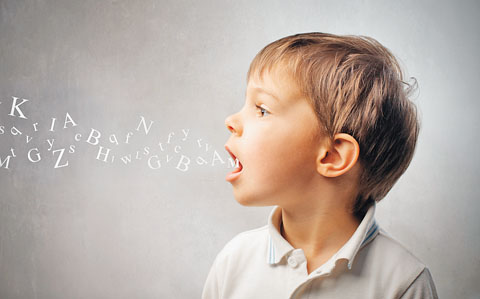Language delays are the most common developmental delays.
It affects roughly 20% of children. In many cases, these delays are temporary, and the child will simply grow out of it. However, language delays may signify a more permanent condition which if without proper intervention, may cause significant problems for the child throughout his or her schooling career and into adulthood.
Children with language delays tend to exhibit similar symptoms. It’s important to catch these symptoms as early as possible, the earlier the intervention, the better the outcome.
Common Symptoms
Children with delays in language development tend to exhibit a weak memory for visual and auditory sequences. In other words, they struggle with putting things in the proper order, such as pictures, letters, or sounds.
Making predictions or presumptions is difficult for them. This is especially noticeable during story-time. Often, children with these sort of delays will not be able to guess what will happen next in the story, or answer questions related to the story’s content or characters.
They may need more time to process information than their peers. When given a series of instructions, the student may miss several steps because he or she is still processing the first instruction.
Students may struggle with retention and transference of concepts and skills. In other words, a student may forget what he or she knew from one day to the next, and may be unable to transfer concepts from one subject to another.
Academic performance tends to be comparatively weak, and often exhibits significant gaps in one or more areas, such as word retrieval and vocabulary.
Students with language delays tend to be strongly attached to familiar and comfortable things, places, and routines. They are often resistant or evasive when pushed to go beyond this comfort zone.
Phonics (the relationship of symbols and sounds) and text comprehension is noticeably below the level of their peers.
Auditory discrimination is weak. Students with weak auditory discrimination struggle to differentiate between similar sounds, and foreground noise tends to blend into background noise. This makes it very difficult for the student to focus and stay attentive.
Developmental Milestones
Again, the earlier this delay is detected, the better. But at what point does it become clear whether or not a child is significantly delayed?
Child development professionals and pediatricians provide a flexible framework of milestones which the majority of children reach in their first two years. Individual development varies somewhat, of course, but these milestones provide a helpful reference point for parents who are concerned about their child’s rate of development and growth.
By the time a baby is 1 year old, he or she should be able to react to sounds, and identify the sources of those sounds. Cooing and babbling is healthy at this point, as it means that the child is gaining control over his or her own voice. The child will also point to objects or items, and make sounds while pointing.
Between the ages of 1 and 2, the child will begin to follow simple commands (at first through gestures, later through words only). Early in this year, the child will communicate through pointing and gestures, along with a few simple words. Later in the year, most children are able to learn about 1 new word each week.
By 2 years of age, most children will be able to say anywhere from 50 to 100 words, and be able to use those words in simple 2 or 3-word sentences (such as “all gone,” “that mine,” or “I want drink”). These sentences are understandable about 50% of the time.
These are the trends showed by the majority of toddlers, and individual development will vary. However, if your child’s development seems to be significantly behind these milestones, it’s best to consult a doctor. The problem may be insignificant, but if your child is indeed language delayed, early intervention is crucial.

